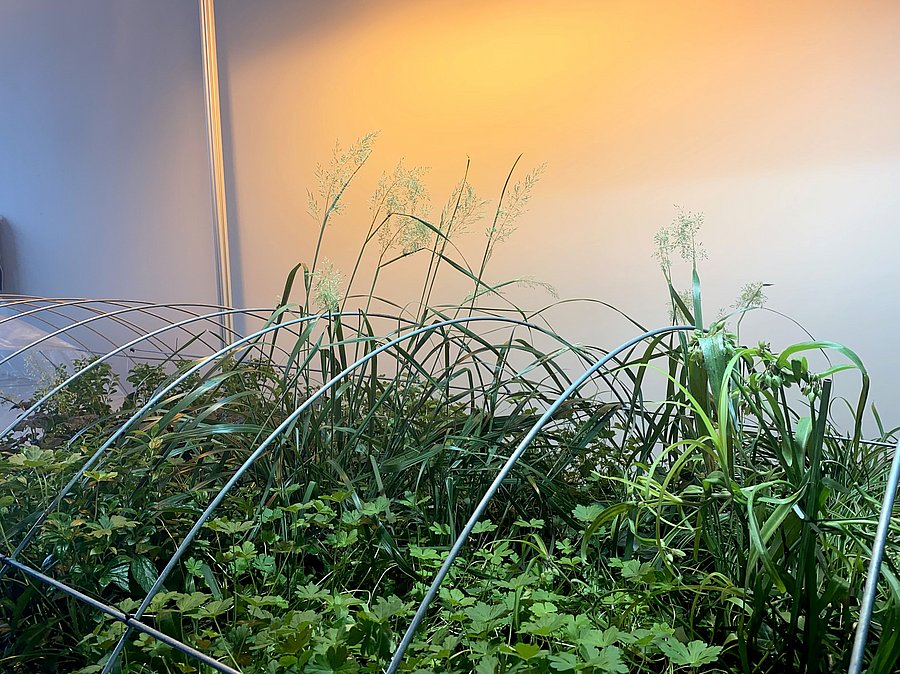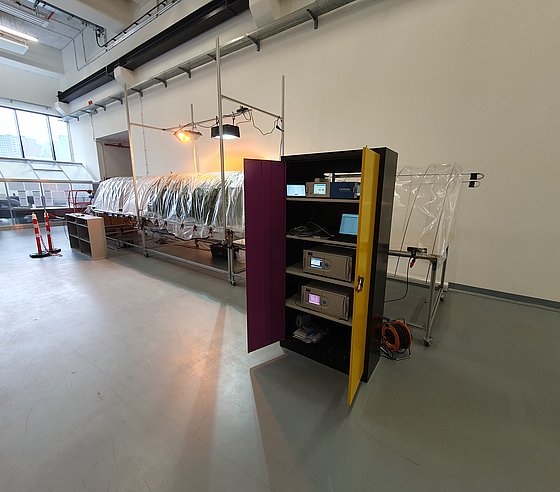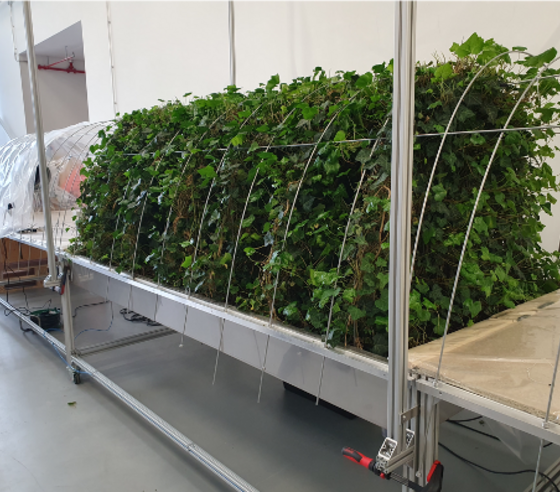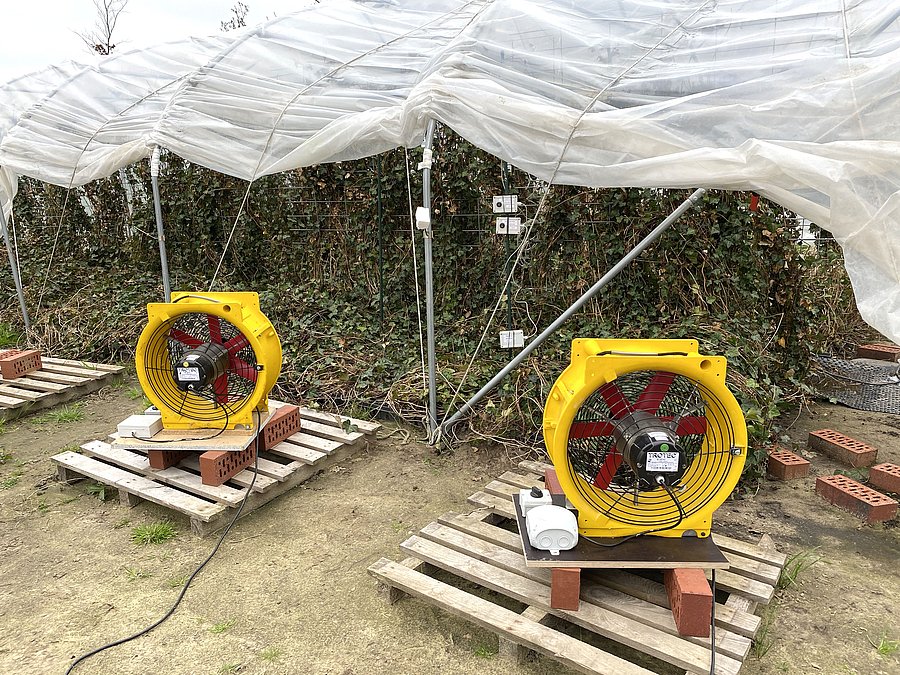In the interests of climate protection
Researchers test new sensor technology to assess urban green spaces

How does urban greening help protect the climate? Researchers at the University of Wuppertal investigated this question in the SmartGreen project // Photos (4) University of Wuppertal
As cities continue to develop, the way in which residential and living spaces are designed is becoming increasingly important. The targeted greening of urban neighbourhoods is seen as a sensible way to increase the well-being of residents, provides heat protection and - if used correctly - can help to reduce health risks. In order to justify possible additional expenditure, particularly of a financial nature, in the implementation of new buildings and restructuring measures to property developers, sponsors and the population, more reliable facts are needed: What concrete contribution does urban greening make to air quality?
In the "SmartGreen" project, researchers from the Institute for Particle Technology at the University of Wuppertal, together with their partners from HANZA Tech Solutions GmbH and HELIX Pflanzensysteme GmbH, have been looking for ways to cost-effectively determine various key figures for evaluating green urban areas - both horizontally and vertically. Dr Matthias Kaul, who is leading the project together with Dr Ganna Reznik at the University of Wuppertal, explains the initial situation of the project in more detail: "Many of us are probably familiar with the display panels on buildings when they are supplied with solar power. They show in real time how much electricity is being generated by renewable energies. Our idea was to find out whether such possibilities could also exist for ecosystems, as in the case of urban greening." According to the current state of the art, recording ecosystem performance in this way is associated with a high financial outlay.

The project team built a wind tunnel equipped with various plants to test the performance of the measuring system they had developed.

In terms of reducing particulate matter, the researchers found that ivy planting was highly effective.

Cost-effective, freely programmable, interconnected and expandable as required: the multi-sensors record the required data in the project.
High demands on the measuring system
The project therefore focussed on the development of a mobile measuring system consisting of a large number of cost-effective, freely programmable, interconnected and freely expandable multi-sensors for recording parameters such as humidity, temperature and particulate matter pollution as well asCO2, oxygen and nitrogen oxides. "Classic measuring devices for checking particulate matter in the air, for example," says Kaul, "cost around 20,000 euros and usually measure this one parameter. The multi-sensors developed by our partner HANZA for the research project have a unit price of 200 euros and allow statements to be made about various key figures. This is new and emphasises the enormous potential we see in this."
Another challenge to which the project team wanted to provide an answer with the measuring system: In practice, constantly changing wind conditions influence the quality of the measurements, which is why the high number of sensors and their networking was important to the researchers. "If we equip a greened area with measuring devices at two points that are positioned according to the wind direction at time X, then we have a problem as soon as the wind shifts. From then on, we can no longer make any statements about the air quality at measuring station A compared to measuring station B," explains Kaul. Due to the large number of sensors in the experimental setup, there is always a pair that corresponds to the current wind direction.
Measurements in the self-built wind tunnel
In order to initially test the performance of the measuring system they had developed under laboratory conditions, the project team built a wind tunnel equipped with various plants. "In addition to the multi-sensors, we also measured with so-called reference devices, i.e. the expensive, tried-and-tested instruments, to see whether we get the same results," says Kaul. The result was doubly positive for the researchers: "Not only did we receive confirmation that the sensors were measuring perfectly, but the measurement results also revealed the surprisingly high performance of ivy planting in terms of reducing particulate matter. In the wind tunnel, the ivy reduced a certain type of particulate matter in the ambient air by up to half." Due to the inclination and interaction of the leaves with each other, the hedge acts like an organic depth filter. Ivy is significantly better than the shrub planting that was also tested.

The researchers have set up an external laboratory in Münster for further tests.
After completing the tests in the wind tunnel, the scientists and their project partners have now set up the measuring system in an outdoor laboratory in Münster. Measurements are currently being carried out on a planted area of around 40 square metres with sensors at different measuring heights. The first positive trends in dust particle reduction from the ambient air can also be seen here. "It is currently much more difficult to make statements about the effects on gaseous components of the air, such asCO2. The tests in the wind tunnel have already shown this. One reason is certainly the change in concentration in the ambient air. As this is relatively low, it is not yet possible to draw any clear conclusions," explains Kaul.
The project team is therefore particularly pleased that the series of tests in Münster will not be the end of the story. The initial promising results have led to the project being extended. In order to collect even more data, they are networking with a research project in Stuttgart. "Our colleagues from the BioDivFassade project have planted a house façade with a wide variety of plants in order to make statements about the development of biodiversity in this area. We now have the opportunity to further test our measuring system on this façade. That's great, because vertical planting on buildings will play an increasingly important role in our cities in the future," says Kaul. If the project shows that a mobile, cost-effective measuring system is also worthwhile for this area of application, it would be another important building block on the way to designing climate-friendly living spaces.
According to Kaul, it is already conceivable at this stage that the use of such a measuring system could also be useful for occupational safety. Where employees are sometimes exposed to hazardous substances, the easier it is to identify and quantify them, the better.
More background on SmartGreen
SmartGreen is one of a total of twelve research and development projects being supported by the Innovation Network for Urban Horticulture (INUGA) on behalf of the Federal Ministry of Food and Agriculture (BMEL) and represented by the Federal Office for Agriculture and Food (BLE). SmartGreen was funded for a total of two years with a funding amount of around 430,000 euros. Further funding for six months has been approved.
Through the INUGA network, the SmartGreen researchers established contact with the Stuttgart-based joint project BioDivFassade, so that the measurements with the multi-sensors can now also be trialled on a vertical green façade system.
Innovation Days
The participants in the INUGA projects will also be presenting their results in Berlin in November. The Innovation Days 2024 will take place there from 4 to 6 November under the motto "Sustainable agriculture: innovative solutions for climate protection, animal welfare and healthy nutrition". The Innovation Days focus on knowledge transfer and dialogue and every two years offer the opportunity for broad networking between stakeholders from business, science and politics and provide an insight into the forward-looking projects from the Federal Ministry of Food and Agriculture's innovation funding programme.
